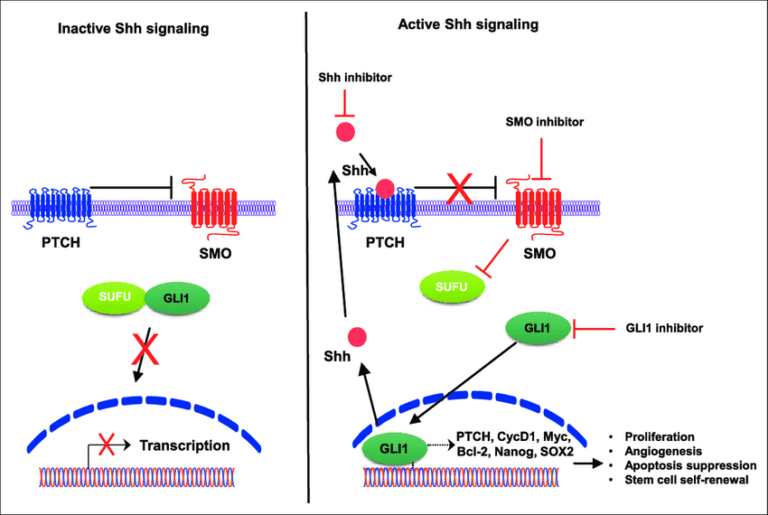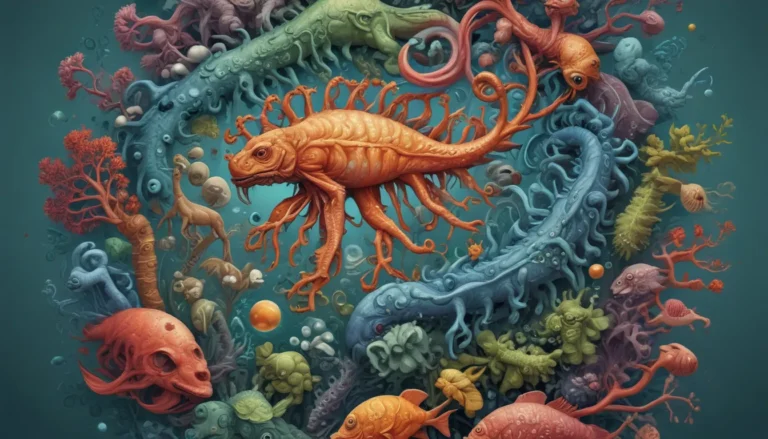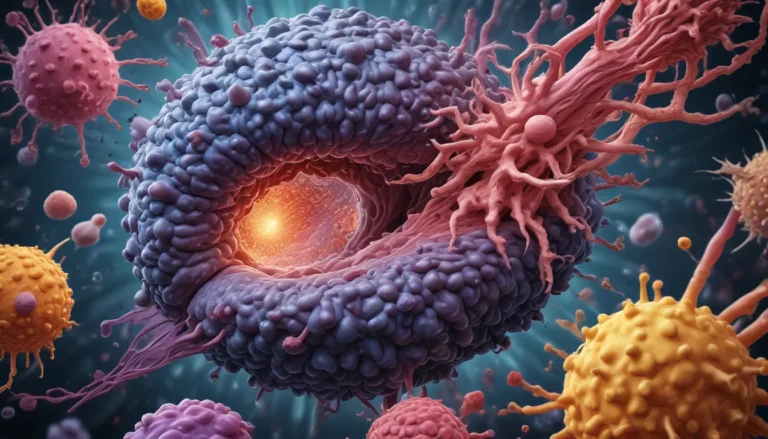A Note About Images: The images used in our articles are for illustration purposes only and may not exactly match the content. They are meant to engage readers, but the text should be relied upon for accurate information.
Genetics is a vast and captivating field that never ceases to provide us with new wonders and revelations. One of the fundamental concepts in genetics is the notion of recessive alleles. While dominant alleles often steal the spotlight when it comes to genetic traits, recessive alleles have their own hidden charm and complexities waiting to be explored.
In this article, we will embark on a journey into the realm of recessive alleles and unveil 11 surprising facts about them. From their role in genetic disorders to their impact on phenotypic traits, recessive alleles hold a plethora of intriguing secrets that shed light on the intricate workings of genetics. So, prepare yourself to delve into the fascinating world of genetics and discover the hidden treasures of recessive alleles.
Unraveling the Enigma of Recessive Alleles
Recessive alleles are a crucial component of the genetic tapestry that shapes who we are. These genetic variations lie in the shadow of dominant alleles, only revealing themselves under specific circumstances. Let’s explore some key insights into the world of recessive alleles:
1. Recessive Alleles: The Silent Players in Inheritance
Recessive alleles are genetic variants that exert their influence only when an individual inherits two copies of the allele, one from each parent. While they may remain concealed in the presence of dominant alleles, recessive alleles play a pivotal role in determining the traits that are passed down from generation to generation.
2. The Dual Faces of Recessive Alleles: Genetic Disorders
Certain genetic disorders, such as cystic fibrosis and sickle cell anemia, are attributed to recessive alleles. Individuals who carry a single copy of the recessive allele typically do not exhibit any symptoms of the disorder. However, if both parents are carriers, there is a risk that their offspring may inherit the disorder.
3. The Charms of Recessive Alleles: Unique Phenotypic Traits
Recessive alleles can also give rise to distinctive physical characteristics. For instance, the allele for red hair is recessive, requiring individuals to inherit two copies of the allele to manifest red hair. This explains why redheads are relatively scarce in the population.
Exploring the Intricacies of Recessive Alleles
Recessive alleles are not merely passive bystanders in the realm of genetics. Let’s delve deeper into their complexities and unravel the mysteries that make them such fascinating genetic entities:
4. The Legacy of Recessive Alleles Across Generations
Recessive alleles have the remarkable ability to persist across multiple generations, even if they are not visibly expressed in every lineage. This legacy is upheld by carriers who transmit recessive alleles to their offspring, perpetuating their presence in the genetic pool.
5. Shaping Phenotypes: The Influence of Genes and Environment
The expression of recessive alleles can be modulated by a myriad of factors, including other genetic elements and environmental influences. This dynamic interplay, known as gene-environment interaction, contributes to the diverse phenotypic outcomes associated with recessive traits.
6. Tracing Genetic Footprints: The Role of Family Pedigrees
Geneticists rely on family pedigrees to trace the inheritance patterns of recessive alleles and uncover their presence within lineages. These genetic maps provide vital insights into the genetic underpinnings of various diseases and traits, guiding research and clinical interventions.
7. The Tapestry of Diversity: Recessive Alleles in Different Populations
Certain populations may exhibit a higher prevalence of specific recessive alleles due to genetic isolation or historical events. This genetic diversity can influence the incidence of genetic disorders within these populations, highlighting the complex interplay of genetics and demographics.
The Evolutionary Tapestry of Recessive Alleles
While recessive alleles are often associated with genetic disorders, they also offer evolutionary advantages that shape the genetic landscape. Let’s explore how recessive alleles contribute to the tapestry of evolution and adaptation:
8. Advantages in Disguise: Evolutionary Benefits of Recessive Alleles
Despite their association with genetic disorders, recessive alleles can confer evolutionary advantages under certain circumstances. For example, the sickle cell allele, when present in a heterozygous state, provides protection against malaria—a classic example of the intricate balance of genetic trade-offs.
9. Navigating Genetic Landscapes: The Role of Genetic Testing
Advancements in genetic testing enable individuals to identify recessive alleles linked to various genetic disorders. This information empowers informed decisions about health management, family planning, and risk assessment, offering a glimpse into the genetic blueprint that shapes our lives.
10. Genetic Diversity at Play: Recombination of Recessive Alleles
Genetic recombination plays a pivotal role in generating novel combinations of alleles, including recessive variants. This process contributes to genetic diversity within populations, driving evolution and adaptation by creating new genetic landscapes shaped by recessive alleles.
Embracing the Complexity of Genetics
The study of recessive alleles unveils the intricate tapestry of genetics, unveiling a wealth of insights into the mechanisms that govern our inherited traits and predispositions. Let’s explore how recessive alleles reflect the complexity of genetics and shape our understanding of inheritance and genetic diversity:
11. Genetic Complexity Unveiled: The Enigmatic World of Recessive Alleles
The study of recessive alleles underscores the multifaceted nature of genetics, encompassing inheritance dynamics, genetic interactions, and environmental influences that orchestrate the diversity of traits and disorders observed in human populations. This complexity invites us to delve deeper into the genetic mosaic that defines who we are.
Unveiling the Mysteries of Recessive Alleles
In conclusion, the 11 Surprising Facts About Recessive Alleles illuminate the pivotal role of these genetic elements in shaping inheritance patterns, genetic disorders, and phenotypic diversity. By unraveling the secrets of recessive alleles, we gain a deeper understanding of the genetic blueprint that defines our unique traits and susceptibilities.
Through their interactions with dominant alleles and environmental factors, recessive alleles sculpt the genetic landscape with intricate precision, offering a glimpse into the dynamic interplay of genetics and evolution. The study of recessive alleles continues to unravel new layers of complexity and sophistication in the realm of genetics, enriching our knowledge of human health and biological diversity.
As you navigate the intricate world of recessive alleles, remember the surprising insights we’ve explored and embrace the marvels of genetics that shape our existence.
FAQs: Navigating the World of Recessive Alleles
-
What are recessive alleles?
Recessive alleles are genetic variations that manifest only when an individual inherits two copies of the allele, contrasting with dominant alleles that require only one copy for expression. -
How do recessive alleles inherit?
Recessive alleles are passed down through generations as individuals inherit genetic information from both parents, requiring the presence of two copies of the recessive allele for expression. -
Can recessive alleles cause genetic disorders?
Yes, recessive alleles can underlie genetic disorders by harboring mutations that disrupt normal biological processes when present in a dual configuration. -
Are recessive alleles more common than dominant alleles?
The prevalence of recessive alleles varies across populations and is contingent on the selective advantages or disadvantages conferred by the specific allele. -
Can recessive alleles provide advantages?
In certain scenarios, recessive alleles can offer evolutionary benefits, such as conferring resistance to diseases like malaria in heterozygous individuals. -
Can recessive alleles be eliminated from a population?
Recessive alleles may persist in a population due to factors like heterozygote advantage or cryptic carriers, but their complete elimination can occur if carriers do not reproduce. -
Do all traits have recessive alleles?
Not all traits exhibit recessive alleles, as their presence is contingent on the genetic composition of the trait and its mode of inheritance. -
Can a dominant allele become recessive over time?
No, the characteristics of dominant and recessive alleles are innate properties of the gene and do not transform over time, remaining distinct entities in genetic inheritance. -
Are recessive alleles more prevalent in specific populations?
The distribution of recessive alleles can vary among populations due to historical and evolutionary factors, leading to differing frequencies based on genetic drift or founder effects. -
Are all recessive alleles the result of mutations?
While some recessive alleles arise from mutations that alter gene function, others represent normal genetic variations with no detrimental effects when present in a double configuration. -
Can the expression of recessive alleles be influenced by the environment?
In certain instances, environmental factors can modulate the expression of recessive alleles, impacting the phenotypic outcomes and interactions between genetic and environmental influences.
Genetics is a realm of endless exploration and discovery, offering a glimpse into the awe-inspiring mechanisms that shape our existence. As you embark on your genetic journey, remember that recessive alleles are not mere shadows but vibrant threads woven into the intricate tapestry of heredity. Embrace the marvels of genetics and unlock the hidden wonders that lie within the world of recessive alleles.






